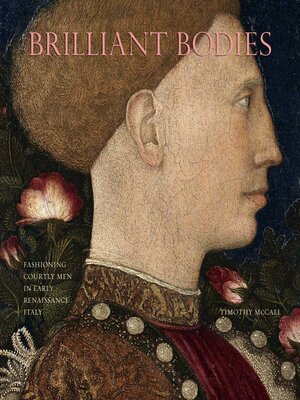
Sign up to save your library
With an OverDrive account, you can save your favorite libraries for at-a-glance information about availability. Find out more about OverDrive accounts.
Find this title in Libby, the library reading app by OverDrive.



Search for a digital library with this title
Title found at these libraries:
| Library Name | Distance |
|---|---|
| Loading... |
Italian court culture of the fifteenth century was a golden age, gleaming with dazzling princes, splendid surfaces, and luminous images that separated the lords from the (literally) lackluster masses. In Brilliant Bodies, Timothy McCall describes and interprets the Renaissance glitterati—gorgeously dressed and adorned men—to reveal how charismatic bodies, in the palazzo and the piazza, seduced audiences and materialized power.
Fifteenth-century Italian courts put men on display. Here, men were peacocks, attracting attention with scintillating brocades, shining armor, sparkling jewels, and glistening swords, spurs, and sequins. McCall's investigation of these spectacular masculinities challenges widely held assumptions about appropriate male display and adornment. Interpreting surviving objects, visual representations in a wide range of media, and a diverse array of primary textual sources, McCall argues that Renaissance masculine dress was a political phenomenon that fashioned power and patriarchal authority. Brilliant Bodies describes and recontextualizes the technical construction and cultural meanings of attire, casts a critical eye toward the complex and entangled relations between bodies and clothing, and explores the negotiations among makers, wearers, and materials.
This groundbreaking study of masculinity makes an important intervention in the history of male ornamentation and fashion by examining a period when the public display of splendid men not only supported but also constituted authority. It will appeal to specialists in art history and fashion history as well as scholars working at the intersections of gender and politics in quattrocento Italy.







